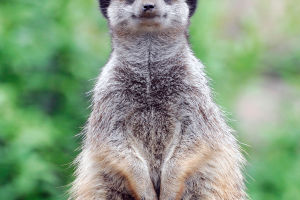Hummingbirds, vibrant and full of energy, are among the most fascinating creatures in nature.
With their remarkable flying abilities and beautiful plumage, they stand out in the bird world.
These tiny birds have unique physical features, exceptional flight skills, and adaptability to their environment, making them synonymous with aerial fairies.
The name "hummingbird" comes from the rapid wing vibrations that resemble the buzzing of a bee. Unlike other birds, hummingbirds have a special way of flying. Their wings not only flap up and down but also swing back and forth, allowing them to hover in mid-air like a helicopter.
This hovering ability enables hummingbirds to navigate between flowers with ease, performing pollination. A hummingbird's wings can beat 50 to 80 times per second, and its flying speed can exceed 50 km/h, reaching up to 100 km/h in short bursts.
Hummingbirds are incredibly lightweight, typically measuring 7 to 13 centimeters in length and weighing less than 20 grams. Their feathers are brightly colored, usually in shades of green, red, blue, and other vivid hues. These colors result from the microscopic structures on the feathers that refract and reflect light, rather than pigments.
As a result, the feathers appear to shimmer as the light changes, making them mesmerizing. Female and male hummingbirds often differ in plumage, with males having more vibrant colors to attract mates.
The primary food source for hummingbirds is nectar. They use their long, slender bills to insert into flowers and extract nectar. Additionally, they consume insects and spiders to meet their protein needs. Hummingbirds have a very fast metabolism, requiring large amounts of food each day to maintain their energy levels. To support their high-energy flight, their heart rate can reach up to 1,200 beats per minute during flight, and even at rest, it remains around 500 beats per minute.
Hummingbirds are primarily found in the Americas, especially in tropical and subtropical regions. From southern Canada to northern Argentina, they are distributed throughout the continent. In these areas, hummingbirds are often seen moving between various flowering plants, relying on nectar for sustenance. However, their habitat is not limited to flowers—they are also adaptable to a variety of ecological environments, including forests, mountains, and gardens.
Hummingbirds play an important role in the ecosystem as pollinators. By flying between different flowers, they inadvertently help plants spread pollen, promoting plant reproduction. Their small size allows them to move between flowers without causing damage. Many tropical plants, in particular, depend on hummingbirds for pollination, with flowers specifically designed to attract them.
In some cultures, hummingbirds hold special symbolic meanings. Their swift flight and colorful feathers often lead people to associate them with freedom, courage, and happiness. Especially in Native American cultures, hummingbirds frequently appear in myths and stories, symbolizing strength and agility. The hummingbird's flight also inspires humans, symbolizing freedom and speed, while their presence reminds us of the lightness and beauty of life.
Despite their strong vitality in the natural world, hummingbirds face numerous challenges. Habitat destruction, climate change, and the invasion of non-native species all pose threats to their survival. Additionally, since hummingbirds rely heavily on nectar, the use of pesticides and chemicals may affect their food sources, further threatening their existence. Therefore, it is crucial to protect hummingbirds and their habitats.
Hummingbirds are not only a small miracle of nature but also a symbol of the harmonious relationship between humans and the natural world. In modern society, we must pay more attention to their survival environment, protecting these beautiful little creatures so they can continue to soar freely across the Earth, bringing us endless beauty and wonder.


